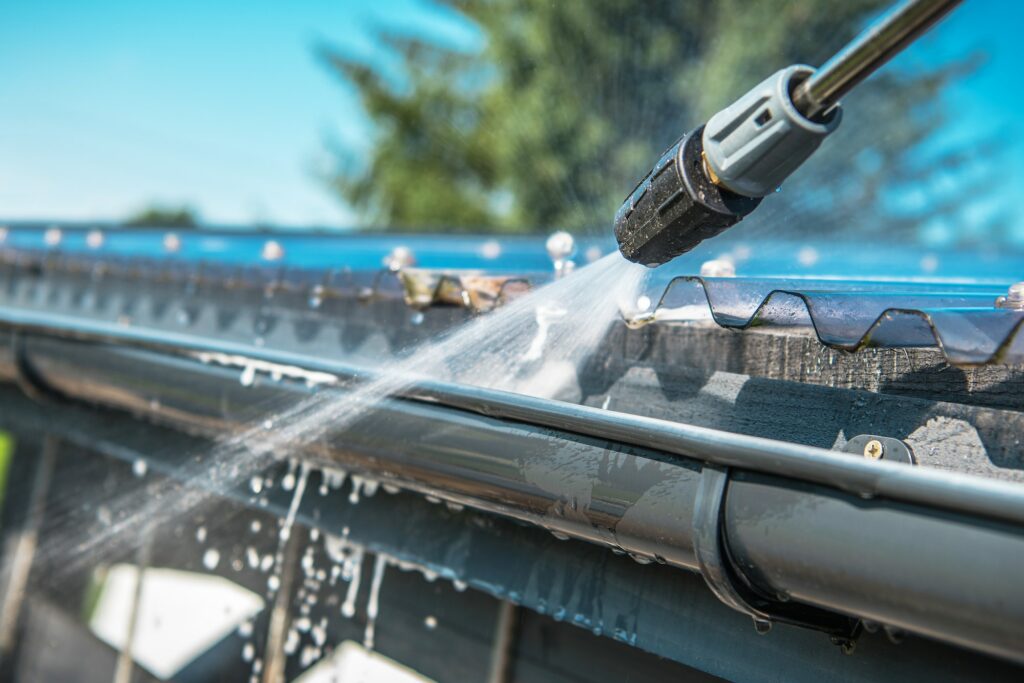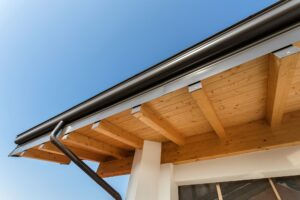The Importance of Maintaining Aluminum Rain Gutters
When it comes to protecting your home from rainwater damage, properly maintained rain gutters play a crucial role. Aluminum rain gutters are a popular choice among homeowners due to their durability, lightweight nature, and resistance to rust. However, like any other component of your home, aluminum rain gutters require regular maintenance to maximize their lifespan and ensure optimal performance. In this article, we will explore maintenance tips and best practices that will help you keep your aluminum rain gutters in excellent condition, preventing costly repairs and preserving the structural integrity of your home.
Understanding Aluminum Rain Gutters
Before diving into maintenance strategies, it’s essential to understand the basic structure and function of aluminum rain gutters. Aluminum gutters are typically formed from lightweight aluminum alloy, making them resistant to corrosion and well-suited for withstanding various weather conditions. They are available in different shapes and sizes, such as K-style and half-round gutters, to accommodate different architectural styles.
The primary purpose of rain gutters is to collect rainwater from the roof and redirect it away from the foundation of your home. By doing so, they prevent water from pooling around the foundation, which can lead to soil erosion, basement flooding, and structural damage. Additionally, gutters also help protect exterior walls, windows, and doors from excessive moisture exposure.
Installation and Proper Positioning
Proper installation and positioning of aluminum rain gutters are essential for their optimal performance and longevity. Here are some key considerations during installation:
Choosing the Right Size and Style
Selecting the appropriate gutter size and style is crucial to ensure efficient water drainage. Factors like the size of your roof, average rainfall in your area, and roof pitch influence the sizing decision. Consult with a professional or refer to industry standards to determine the right size and style for your specific needs.
Sloping for Optimal Water Flow
During installation, it’s important to ensure the gutters are properly sloped to allow water to flow towards the downspouts. The recommended slope is typically ¼ inch per 10 feet of gutter length. This prevents water from pooling in the gutters, reducing the risk of corrosion and damage.
Strategic Placement of Downspouts
Position the downspouts strategically to ensure efficient water drainage. Ideally, downspouts should be placed at the corners of your home and spaced adequately to handle the volume of water collected by the gutters. This prevents overloading and minimizes the strain on the gutter system.
Regular Cleaning and Inspection
Regular cleaning and inspection are fundamental to maintaining the functionality and longevity of your aluminum rain gutters. Over time, leaves, twigs, debris, and even bird nests can accumulate in the gutters, causing blockages and hindering water flow. Here’s how to keep your gutters clean and free from obstructions:
Establishing a Cleaning Schedule
Create a routine cleaning schedule to remove debris from your gutters. Depending on the foliage and climate in your area, you may need to clean them at least twice a year or more frequently if necessary. Fall and spring are common seasons for gutter cleaning.
Safety Precautions
Before cleaning the gutters, take necessary safety precautions. Wear gloves, safety glasses, and use a sturdy ladder. Ensure the ladder is placed on a stable surface and have someone nearby to assist if needed.
Removing Debris
Start by removing large debris, such as leaves and twigs, by hand or with a small garden trowel. Dispose of the debris in a compost bin or appropriate waste container. Once the larger debris is cleared, use a garden hose to flush out the remaining smaller particles, ensuring unobstructed water flow.
Inspecting for Damage
While cleaning the gutters, take the opportunity to inspect for any signs of damage. Look for cracks, loose fasteners, sagging sections, or any other issues that may require repair. Early detection allows for timely intervention, preventing further damage and potential water leaks.
Repairing Minor Issues
Timely repairs of minor issues can prevent them from escalating into more significant problems. If you notice any of the following issues during your inspection, take appropriate action:
Patching Leaks
If you identify leaks or small holes in the gutters, use an appropriate sealant or patching compound designed for aluminum gutters. Clean the affected area, apply the sealant as per the manufacturer’s instructions, and ensure a proper seal is formed.
Realigning Sagging Gutters
Sagging gutters can impede water flow and lead to overflow or damage to the gutter system. Use gutter hangers or brackets to reattach and realign sagging sections. Ensure the gutters are properly sloped for optimal performance.
Tightening Loose Fasteners
Over time, fasteners may become loose due to factors like temperature changes and exposure to elements. Check for loose screws, nails, or brackets and tighten them as necessary. Ensure they are securely fastened to maintain the structural integrity of the gutter system.
Replacing Damaged Components
In case of significant damage, such as severe corrosion or large holes, it may be necessary to replace damaged gutter sections or components. Consult with a professional gutter installer to assess the extent of the damage and provide appropriate solutions.
Preventing Clogs and Blockages
Preventing clogs and blockages is vital for the proper functioning of your aluminum rain gutters. Here are some preventive measures you can take:
Gutter Guards or Screens
Consider installing gutter guards or screens to prevent debris from entering the gutters while allowing water to flow freely. These protective measures act as a barrier against leaves, twigs, and other unwanted debris, reducing the frequency of cleaning required.
Trimming Overhanging Branches
Trees with overhanging branches can deposit leaves and twigs directly into the gutters, increasing the risk of clogs. Regularly trim back any branches that hang over your roof or gutters to minimize debris accumulation.
Downspout Strainers
Installing downspout strainers or filters can further enhance the prevention of clogs. These devices prevent debris from entering the downspouts, minimizing the chances of blockages and ensuring smooth water flow.
Regular Tree Maintenance
If you have trees near your home, consider regular tree maintenance, such as pruning or removing dead branches. This reduces the amount of debris falling onto your roof and gutters, lowering the risk of clogs and damage.
Protection against Corrosion
Aluminum rain gutters are known for their resistance to rust and corrosion. However, taking additional steps to protect them from corrosion can further extend their lifespan. Here’s how:
Applying a Protective Coating
Consider applying a protective coating or paint designed specifically for aluminum gutters. This coating acts as a barrier, shielding the gutters from moisture and environmental elements, thereby reducing the risk of corrosion.
Regular Cleaning and Maintenance
Regularly cleaning and maintaining your gutters not only prevents blockages but also removes any corrosive substances that may accumulate over time. Acidic substances, such as bird droppings or tree sap, can accelerate corrosion if left untreated.
Avoiding Abrasive Cleaners
When cleaning your gutters, avoid using abrasive cleaners or tools that may scratch the surface. Scratches can compromise the protective layer of the gutters, making them more susceptible to corrosion. Stick to mild detergents or soapy water for cleaning.
Managing Moisture Levels
Ensure proper drainage around your home’s foundation to avoid excessive moisture accumulation. Proper grading, downspout extensions, and appropriate landscaping techniques can help manage moisture levels, reducing the exposure of gutters to prolonged dampness.
Winterizing Your Aluminum Rain Gutters
Winter can bring its own set of challenges for your rain gutters. Taking specific steps to winterize them can help prevent issues caused by freezing temperatures and ice dams:
Cleaning Before Winter
Before the onset of winter, thoroughly clean your gutters to remove any debris that may cause clogs or blockages. This prevents water from freezing and potentially damaging the gutters.
Insulating Exposed Pipes
If you have downspouts or pipes that are exposed to freezing temperatures, consider insulating them with foam sleeves or heat tape. This helps prevent freezing and ensures unobstructed water flow.
Removing Snow Buildup
After heavy snowfall, carefully remove any snow buildup from the gutters using a roof rake or snow removal tools. This reduces the weight load on the gutters and minimizes the risk of structural damage.
Dealing with Ice Dams
Ice dams can form along the roofline, preventing proper water drainage. Use a calcium chloride ice melt product to safely melt ice dams and allow water to flow freely. Avoid using rock salt or other de-icing agents that may damage the gutters.
Frequently Asked Questions (FAQs)
- How often should I clean my aluminum rain gutters?
Cleaning frequency depends on factors like foliage and climate. At a minimum, clean your gutters twice a year, ideally in the fall and spring. - Can I install aluminum gutters myself, or should I hire a professional?
While DIY installation is possible, it is recommended to hire a professional to ensure proper sizing, positioning, and secure installation of your aluminum gutters. - How long do aluminum rain gutters typically last?
Well-maintained aluminum rain gutters can last up to 20 years or more, depending on environmental conditions and regular maintenance. - Can I paint my aluminum rain gutters to match my home’s exterior?
Yes, aluminum gutters can be painted using paint designed for outdoor use on metal surfaces. Ensure proper surface preparation and follow the manufacturer’s instructions for best results. - Are gutter guards necessary for aluminum gutters?
While not necessary, gutter guards can significantly reduce the frequency of cleaning by preventing debris from entering the gutters.
Proper Maintenance is Essential
Proper maintenance of your aluminum rain gutters is essential for maximizing their lifespan and ensuring optimal performance in protecting your home from water damage. By following the maintenance tips and best practices outlined in this article, you can prevent clogs, repair minor issues promptly, protect against corrosion, and winterize your gutters effectively. Remember to clean and inspect your gutters regularly, position them correctly during installation, and take preventive measures to avoid clogs and blockages. With proper care, your aluminum rain gutters can serve you for many years, safeguarding your property from potential water-related issues. Just as you would maintain other critical aspects of your home, your gutters too require attention and timely action. They are not just functional appendages but integral parts of your home’s defense mechanism. Keeping them in top-notch condition ensures that they continue to efficiently divert rainwater away from your foundation, preventing soil erosion, basement flooding, and potential damage to your home’s exterior. So, invest the time and effort in maintaining them, and they will undoubtedly repay you with unwavering service and peace of mind.








